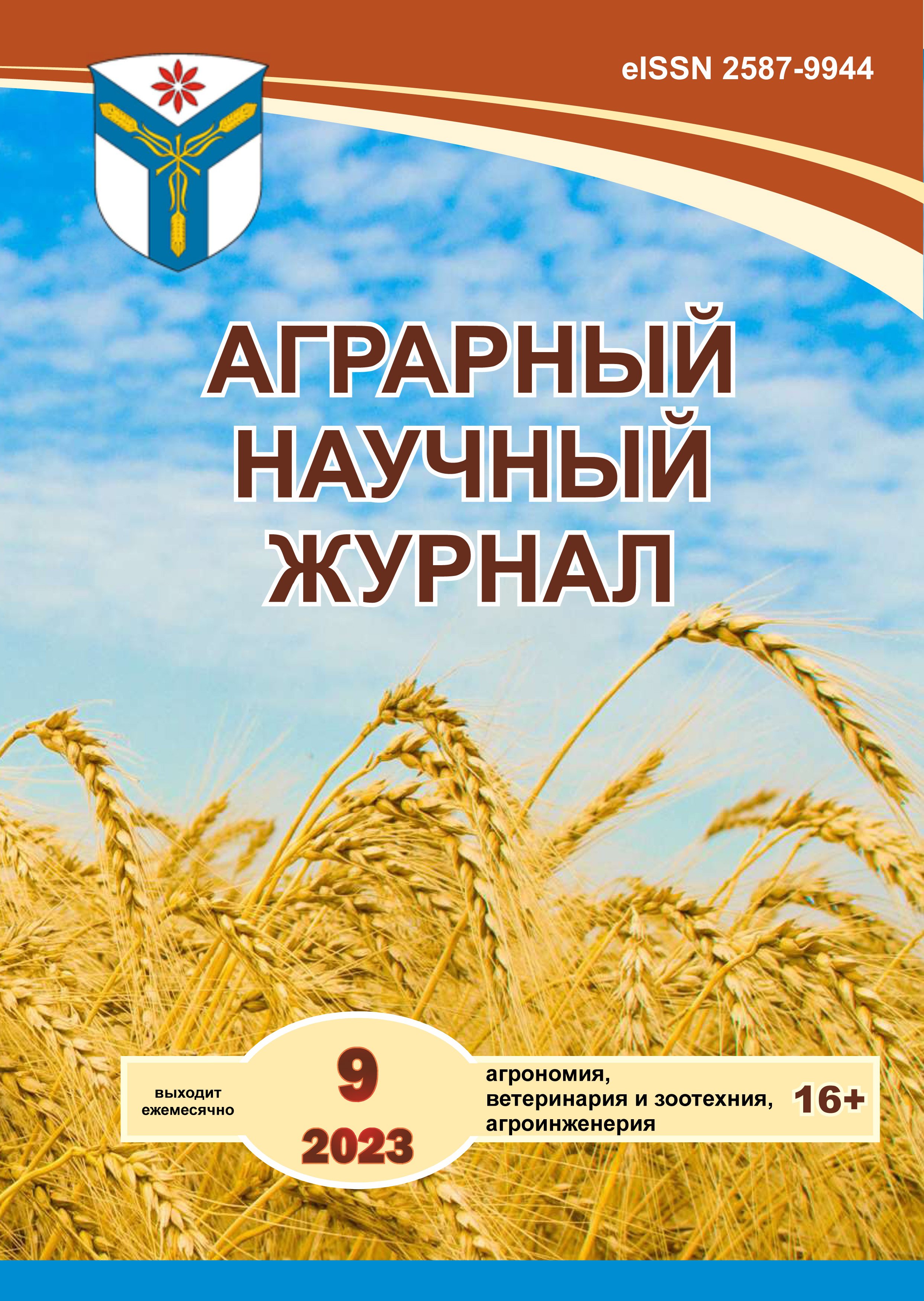Influence of abiotic environmental factors on the biochemical composition of crop production fruits
DOI:
https://doi.org/10.28983/asj.y2023i9pp29-38Keywords:
safflower, currant, rosehip, biochemical composition of fruits, climateAbstract
The article provides information on the study of the effect of abiotic environmental factors on the quality of fruit and berry and medicinal plants in Volgograd and the region: Carthamus tinctorius L., Ribes aureum Pursh., Rosa rugosa Thunb., Rosa cinnamomea L., Rosa acicularis Lindl., Rosa spinosissima L., Rosa canina L. The studies conducted by the authors make it possible to assess the natural and climatic conditions of the region, as well as the suitability and safety of plant species, which is relevant from the point of view of improving the quality of life and improving the health of the population, as well as the development of crop production. The results of the experiments allowed us to recommend certain types of rosehip, safflower and currant for the production of plant products and use in medicine. During laboratory tests, the content of lead, cadmium, zinc and copper was found in the fruits of experimental plants. The maximum fat content in 1000 g of safflower seeds is achieved by applying a dose of sewage sludge of 10 t/ha with a seeding rate of 250 thousand pieces/ha. it was found out that the content of amino acids in fruit bushes depends on weather conditions – 2020 showed an increase in arginine, glycine, leucine and isoleucine in golden currant, proline in rose hips, which indicates their high drought resistance. It was revealed that the content of zinc (12 mg) and copper (8 mg) increased in the fruits of golden currant in areas located close to highways, which is why the collection of fruits for eating in these areas is not recommended. The characteristics of irrigation norms for species at different heights of the aboveground part are given.
Downloads
References
Бубенчикова В. Н., Сухомлинов Ю. А., Гончаров Н. Ф. Аминокислотный состав некоторых представителей растений семейства Розоцветных // Курский науч.-практ. вестник. Человек и его здоровье. 2009. № 3. С. 134–137.
Выходцева И. С., Рыхлова Т. А. Биоиндикация как метод оценки окружающей среды: актуальность и перспективы исследования // Вестник ландшафтной архитектуры. 2015. № 6. С. 44–47.
Громов В. С., Пчеленок О. А., Козлова Н. М. Влияние возрастающих уровней радиационного загрязнения почвы на биохимический состав растений // Гигиена и санитария. 2012. Т. 91. № 2. С. 12–14.
Ивашов П. В. Биогеохимия плодов фруктовых растений // Экологический вестник Северного Кавказа. 2020. Т. 16. № 1. С. 81–84.
Луговской А. М. Биоиндикация как метод мониторинга в процессе территориального управления // Проблемы региональной экологии. 2013. № 2. С. 96–97.
О состоянии окружающей среды Волгоградской области в 2021 году / редкол.: Е. П. Православнова [и др.]; Комитет природных ресурсов, лесного хозяйства и экологии Волгоградской области. Волгоград: ТЕМПОРА, 2022. 300 с.
Озимина И. И., Фролова О. О. Целенаправленный поиск биологически активных веществ в растениях // Современные проблемы науки и образования. 2013. № 1. С. 382.
Оказова З. П., Мажаева П. И. Фитоиндикация – информативный метод оценки окружающей среды // Известия Чеченского государственного педагогического университета. Сер. 2. Естеств. и техн. науки. 2018. Т. 15. № 1(18). С. 102–108.
Серебрянская Т. С. Сравнительный анализ свободных аминокислот сбора лекарственных растений и его полиэкстракта сухого, обладающих нейропротекторным действием // Вестник Бурятского государственного университета. 2010. № 12. С. 88–91.
Cendrowski A. Antibacterial and antioxidant activity of extracts from rose fruits (Rosa rugosa) // Molecules. – 2020. – Т. 25, № 6. – С. 1365. https://doi.org/ 10.3390/molecules25061365
Khazaei M., Khazaei M. R., Pazhouhi M. AN Overview of therapeutic potentials of Rosa canina: a traditionally valuable herb // World Cancer Research Journal. 2020. Т. 7. С. 1580.
Mavlyanovich A. R., Ravshanovna A. K., Abdukodirovich K. A. Studying the drought-resistance of berry plants // International Journal of Psychosocial Rehabilitation. 2020. Т. 24. № 6. С. 304–315.
Toupchi Khosrowshahi Zh. Physiological responses of safflower to exogenous putrescine under water deficit // Journal of Stress Physiology & Biochemistry. 2018. Т. 14. № 3. С. 38–48.
URL: https://soz.bio/rossiyane-tratyat-na-organicheskie-prod/ (дата обращения 1.02. 2023 г.).
Downloads
Published
Issue
Section
License
Copyright (c) 2023 The Agrarian Scientific Journal

This work is licensed under a Creative Commons Attribution-NonCommercial-NoDerivatives 4.0 International License.








